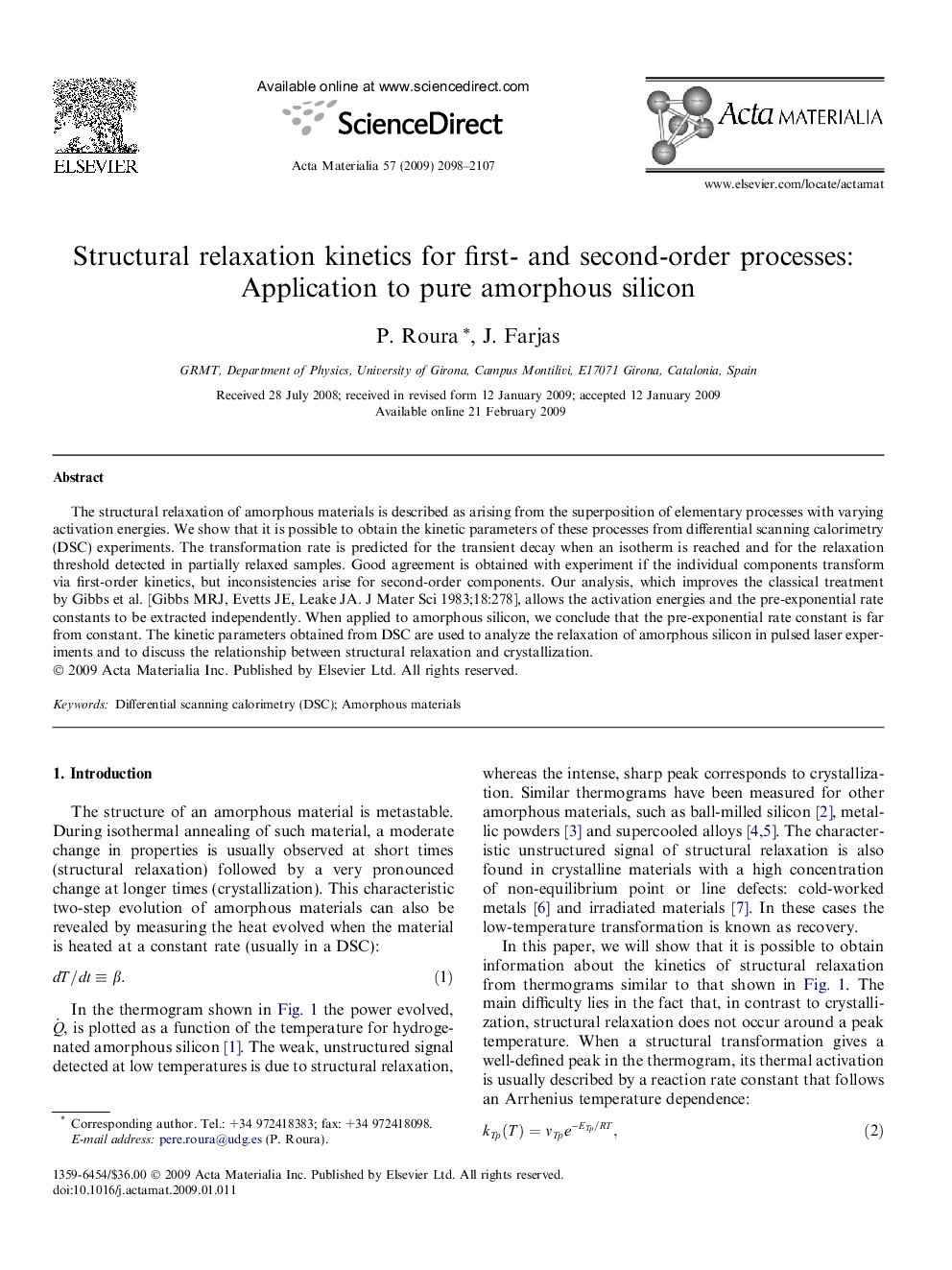| Article ID | Journal | Published Year | Pages | File Type |
|---|---|---|---|---|
| 1448591 | Acta Materialia | 2009 | 10 Pages |
The structural relaxation of amorphous materials is described as arising from the superposition of elementary processes with varying activation energies. We show that it is possible to obtain the kinetic parameters of these processes from differential scanning calorimetry (DSC) experiments. The transformation rate is predicted for the transient decay when an isotherm is reached and for the relaxation threshold detected in partially relaxed samples. Good agreement is obtained with experiment if the individual components transform via first-order kinetics, but inconsistencies arise for second-order components. Our analysis, which improves the classical treatment by Gibbs et al. [Gibbs MRJ, Evetts JE, Leake JA. J Mater Sci 1983;18:278], allows the activation energies and the pre-exponential rate constants to be extracted independently. When applied to amorphous silicon, we conclude that the pre-exponential rate constant is far from constant. The kinetic parameters obtained from DSC are used to analyze the relaxation of amorphous silicon in pulsed laser experiments and to discuss the relationship between structural relaxation and crystallization.
